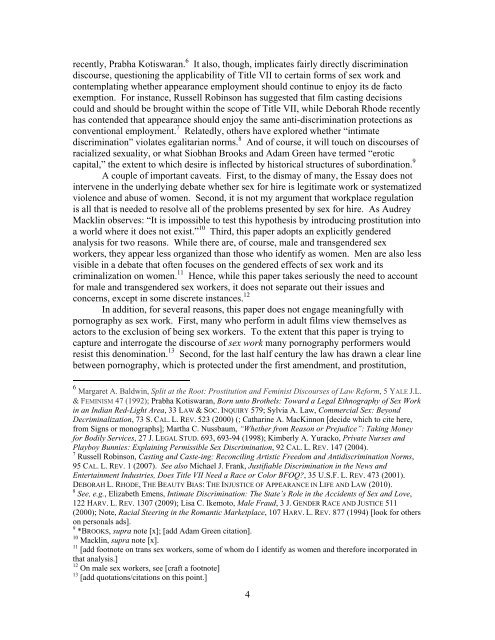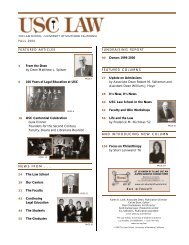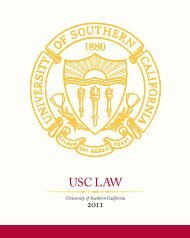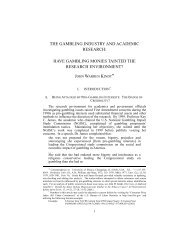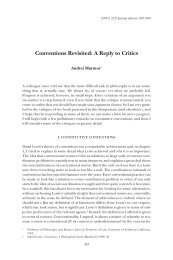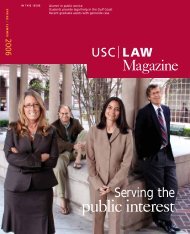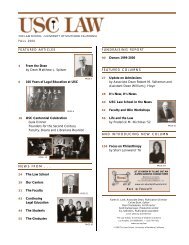1 Regulating Sex Work Adrienne D. Davis VERY ROUGH DRAFT ...
1 Regulating Sex Work Adrienne D. Davis VERY ROUGH DRAFT ...
1 Regulating Sex Work Adrienne D. Davis VERY ROUGH DRAFT ...
Create successful ePaper yourself
Turn your PDF publications into a flip-book with our unique Google optimized e-Paper software.
ecently, Prabha Kotiswaran. 6 It also, though, implicates fairly directly discrimination<br />
discourse, questioning the applicability of Title VII to certain forms of sex work and<br />
contemplating whether appearance employment should continue to enjoy its de facto<br />
exemption. For instance, Russell Robinson has suggested that film casting decisions<br />
could and should be brought within the scope of Title VII, while Deborah Rhode recently<br />
has contended that appearance should enjoy the same anti-discrimination protections as<br />
conventional employment. 7 Relatedly, others have explored whether “intimate<br />
discrimination” violates egalitarian norms. 8 And of course, it will touch on discourses of<br />
racialized sexuality, or what Siobhan Brooks and Adam Green have termed “erotic<br />
capital,” the extent to which desire is inflected by historical structures of subordination. 9<br />
A couple of important caveats. First, to the dismay of many, the Essay does not<br />
intervene in the underlying debate whether sex for hire is legitimate work or systematized<br />
violence and abuse of women. Second, it is not my argument that workplace regulation<br />
is all that is needed to resolve all of the problems presented by sex for hire. As Audrey<br />
Macklin observes: “It is impossible to test this hypothesis by introducing prostitution into<br />
a world where it does not exist.” 10 Third, this paper adopts an explicitly gendered<br />
analysis for two reasons. While there are, of course, male and transgendered sex<br />
workers, they appear less organized than those who identify as women. Men are also less<br />
visible in a debate that often focuses on the gendered effects of sex work and its<br />
criminalization on women. 11 Hence, while this paper takes seriously the need to account<br />
for male and transgendered sex workers, it does not separate out their issues and<br />
concerns, except in some discrete instances. 12<br />
In addition, for several reasons, this paper does not engage meaningfully with<br />
pornography as sex work. First, many who perform in adult films view themselves as<br />
actors to the exclusion of being sex workers. To the extent that this paper is trying to<br />
capture and interrogate the discourse of sex work many pornography performers would<br />
resist this denomination. 13 Second, for the last half century the law has drawn a clear line<br />
between pornography, which is protected under the first amendment, and prostitution,<br />
6<br />
Margaret A. Baldwin, Split at the Root: Prostitution and Feminist Discourses of Law Reform, 5 YALE J.L.<br />
& FEMINISM 47 (1992); Prabha Kotiswaran, Born unto Brothels: Toward a Legal Ethnography of <strong>Sex</strong> <strong>Work</strong><br />
in an Indian Red-Light Area, 33 LAW & SOC. INQUIRY 579; Sylvia A. Law, Commercial <strong>Sex</strong>: Beyond<br />
Decriminalization, 73 S. CAL. L. REV. 523 (2000) (; Catharine A. MacKinnon [decide which to cite here,<br />
from Signs or monographs]; Martha C. Nussbaum, “Whether from Reason or Prejudice”: Taking Money<br />
for Bodily Services, 27 J. LEGAL STUD. 693, 693-94 (1998); Kimberly A. Yuracko, Private Nurses and<br />
Playboy Bunnies: Explaining Permissible <strong>Sex</strong> Discrimination, 92 CAL. L. REV. 147 (2004).<br />
7<br />
Russell Robinson, Casting and Caste-ing: Reconciling Artistic Freedom and Antidiscrimination Norms,<br />
95 CAL. L. REV. 1 (2007). See also Michael J. Frank, Justifiable Discrimination in the News and<br />
Entertainment Industries, Does Title VII Need a Race or Color BFOQ?, 35 U.S.F. L. REV. 473 (2001).<br />
DEBORAH L. RHODE, THE BEAUTY BIAS: THE INJUSTICE OF APPEARANCE IN LIFE AND LAW (2010).<br />
8<br />
See, e.g., Elizabeth Emens, Intimate Discrimination: The State’s Role in the Accidents of <strong>Sex</strong> and Love,<br />
122 HARV. L. REV. 1307 (2009); Lisa C. Ikemoto, Male Fraud, 3 J. GENDER RACE AND JUSTICE 511<br />
(2000); Note, Racial Steering in the Romantic Marketplace, 107 HARV. L. REV. 877 (1994) [look for others<br />
on personals ads].<br />
9<br />
*BROOKS, supra note [x]; [add Adam Green citation].<br />
10<br />
Macklin, supra note [x].<br />
11<br />
[add footnote on trans sex workers, some of whom do I identify as women and therefore incorporated in<br />
that analysis.]<br />
12<br />
On male sex workers, see [craft a footnote]<br />
13<br />
[add quotations/citations on this point.]<br />
4


